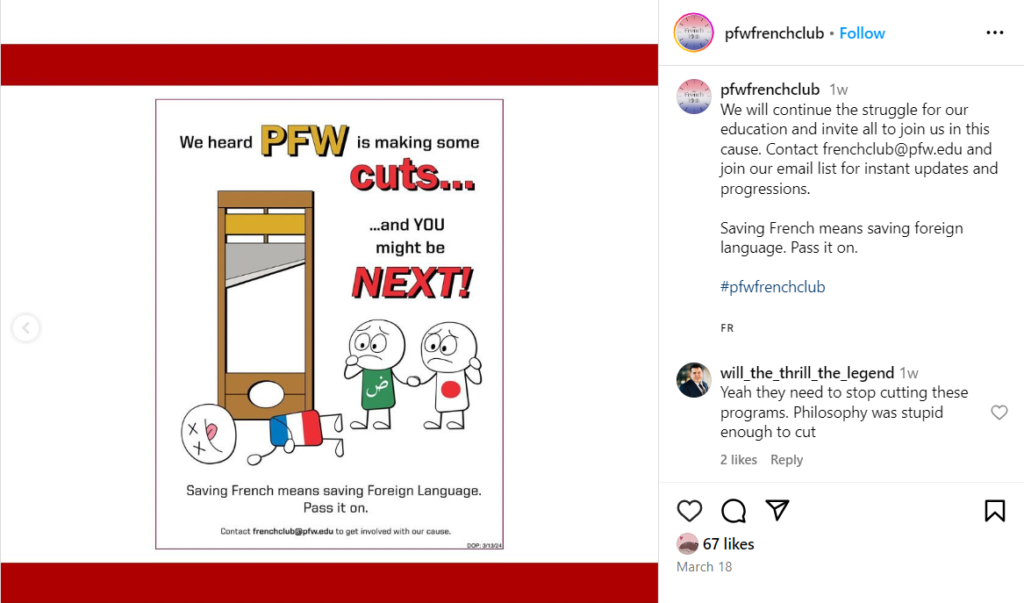By Karen Chaparro
When curious guests looked into the Language Lab, they were greeted by heartfelt laughter, merrymaking, and bead necklaces as the French club invited them to join in on the Mardi Gras festivities.
“Mardi Gras, from how I see, celebrates it in a secular way, Francophone culture as well as our own American culture,” said the president of the French club Veronica Johnson.
Mardi Gras is a holiday, prominently celebrated in New Orleans which has a large Francophone community, known for its lavish costumes, fatty food, and carnival festivities.


In English, Mardi Gras translates to Fat Tuesday because it takes place the day before Ash Wednesday and the first day of Lent where many Christians abstain from consuming certain foods.
In the spirit of Mardi Gras, an assortment of foods heavily associated with the celebration such as pączki and king’s cake were provided for everyone to enjoy.
However, despite the joyous occasion, there was great uncertainty behind the scenes.
At the time of Mardi Gras, the French minor had not been suspended. But, there had been concerns about finding a full-time French professor, after the previous professor retired, before the start of next fall semester.
As of March, the university canceled its search for a French professor after already having started the hiring process. The reasons for this decision are still unclear, but the French minor was suspended soon after.
Although the university is willing to help a select few French minors who are further along in their degree fulfill their remaining credits, many French minors are being told to change their minors.
The French club has recently released a statement condemning the university’s decision to suspend the minor.
“This action set by Purdue University Fort Wayne sets a precedent for further reduction of foreign language programs throughout all levels of education,” according to their statement posted on Instagram.

The French club is a relatively new club at the university, having formed in March of 2023, but the French department has a longer and richer history at the university.
A large motivation for the formation of the French club has been to create an organized sense of community by providing opportunities for students to create strong bonds through participation in francophone culture.
This sentiment was also expressed by the French tutor Alisa Schrock about the role the French club and learning French has had in her life.
“It keeps me in on our French learning community,” Shrock said. “It’s important because not only do students share homework, but become friends through the time we spend together studying and learning new things.”
One exciting visitor at the event was the retired French professor Dr. Nancy Virtue. Even whilst retired, she maintains strong connections with the French club and former students who have created a close-knit community.
“The current group of students have been amazing at creating a sense of community,” Virtue said. “They’re really engaged, so that makes me so happy and easier for me to retire knowing that I was leaving the French program at such a vital moment.”
Although Virtue’s retirement has been a catalyst for great change; the French department has seen a renewed sense of dedication towards foreign language learning, which is being ignored by the university.
One theme that kept coming up during the event was that of community. Culture brings people together. Simple acts such as eating together or living alongside each other gives us greater insight into each other’s lives.
The Mardi Gras event gave everyone there an opportunity to participate in a piece of culture and expand their worldview into different people’s learned experiences, which creates empathy for the people around us.
The French club encourages people to contact them at frenchclub@pfw.edu for more information about the ongoing situation and to spread the news to friends, family, and the university. Students can also sign the online petition to keep the French minor as an option for PFW undergraduates.








